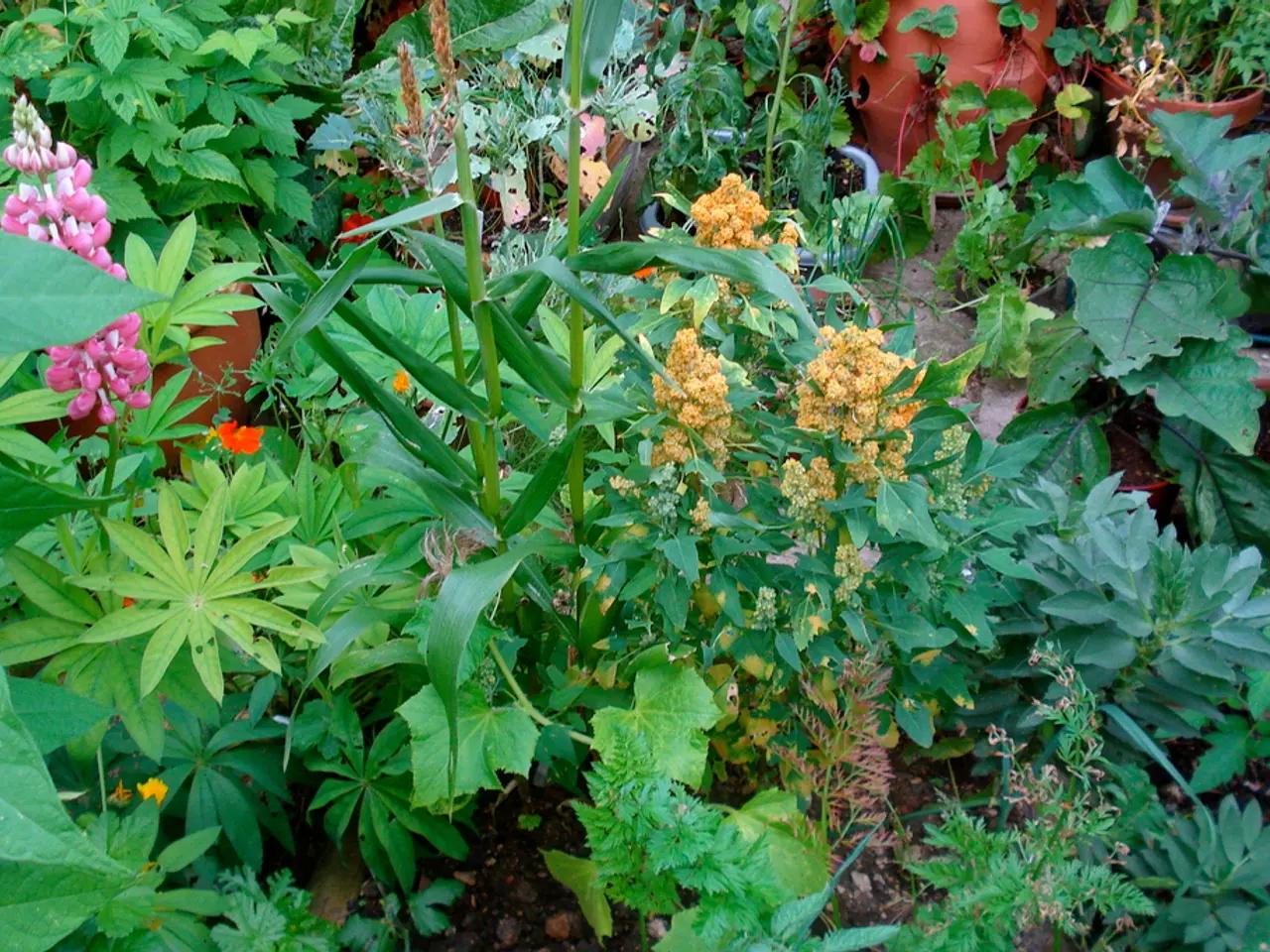Develop a natural, flower-filled pasture
In the heart of the UK, wildflower meadows have seen a dramatic decline, with numbers plummeting by over 97% since the 1930s. This alarming statistic highlights the importance of creating and nurturing these vibrant ecosystems in our gardens.
To help reverse this trend, let's explore how to grow a wildflower meadow from plug plants, a method that ensures the best chances of success.
Firstly, fill a modular tray with seed compost, sow seeds, and cover them with a fine layer of sieved compost. Place the tray in a warm, well-lit position. The plugs should be ready to plant out in eight to 10 weeks if sown in spring, and kept in an unheated greenhouse or cold frame over winter if sown in autumn.
When it comes to plant selection, opt for native wildflowers and grasses adapted to your region. These choices will support local pollinators and wildlife, and include species that bloom successively during the growing season, providing continuous habitat and nectar sources. Some examples of wildflowers that can be grown from plug plants are field scabious, greater knapweed, ox-eye daisy, cowslip, ragged robin, red campion, red clover, musk mallow, and wild carrot.
Once your wildflower patch is established, it's essential to maintain it to ensure its continued success. A well-managed wildflower meadow provides an excellent habitat for declining wildlife, offering a rich mix of flowers for pollinators, grasses for butterflies and moths, and shelter for various wildlife.
After cutting, leave the cuttings where they fall for a few days so any seeds can fall to the ground, before clearing them away to compost. Ideally, wildflower meadows should be cut from late July to September, ideally on a dry day, and any sheltering wildlife should be moved to safety before making the cut.
In a garden situation, a traditional wildflower meadow can be replicated in an area of any size, where wildflowers are sown or planted among perennial grasses. This can significantly increase biodiversity, as wildflower meadows require much less maintenance than a lawn.
By following these practices, you'll create a low-maintenance, pollinator-friendly wildflower meadow that supports biodiversity, improves ecosystem health, and enriches your garden’s natural beauty. In doing so, you can make a difference to declining species, contributing to a greener and more diverse future.
[1] RHS (Royal Horticultural Society). (2021). Wildflower Meadows. [Online]. Available: https://www.rhs.org.uk/advice/profile?PID=457
[2] Garden Organic. (2021). Growing a Wildflower Meadow. [Online]. Available: https://www.gardenorganic.com/advice/growing-a-wildflower-meadow
[3] Wildlife Trusts. (2021). Create a Wildflower Meadow. [Online]. Available: https://www.wildlifetrusts.org/help-for-nature/nature-and-climate-emergency/create-wildflower-meadow
[4] Monty Don. (2020). Creating a Wildflower Meadow. [Online]. Available: https://www.bbc.co.uk/programmes/p08x6zgv
[5] The Wildlife Trusts. (2021). Wildflower Meadows. [Online]. Available: https://www.wildlifetrusts.org/nature-and-climate-emergency/create-wildflower-meadow
- To support local wildlife and improve home-and-garden aesthetics, consider growing a wildflower meadow at home, incorporating native species such as field scabious, greater knapweed, ox-eye daisy, cowslip, ragged robin, red campion, red clover, musk mallow, and wild carrot.
- A well-managed wildflower meadow can not only enhance your lifestyle by providing a vibrant ecosystem full of diverse flora and fauna, but also contribute to the conservation of declining species, thus promoting a greener and more biodiverse future.





